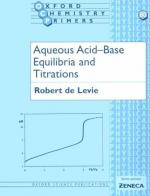|
This section contains 1,469 words (approx. 5 pages at 300 words per page) |

|
In a titration experiment, the goal is to measure the amount of a solution of known concentration required to react completely with a given amount of a solution of unknown concentration. The solution with the amount is to be measured is called the titrant; the one with the unknown concentration is called the analyte. In general, the titrant is placed in a volumetric glassware called a burette and added slowly to a known volume of analyte until the reaction is complete. The point at which the reaction is complete is termed equivalence (or stoichiometric) point. Indicators usually detect this point. These are chemical substances that when added to the analyte, change color at the equivalence point.
The relationship between the analyte and the titrant solutions at the equivalence point of a titration is given by: CaVa = CtVt. Ca is the concentration of the analyte solution, Va is the...
|
This section contains 1,469 words (approx. 5 pages at 300 words per page) |

|


